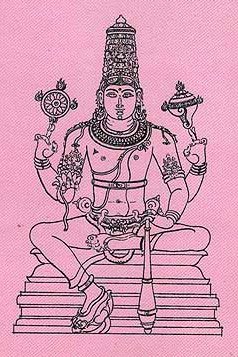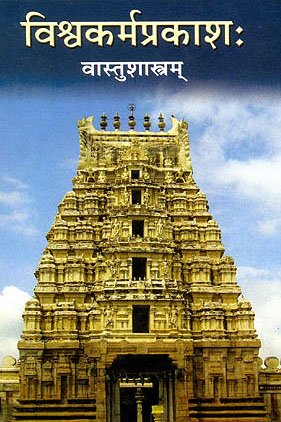Dhvajapratishtha, Dhvajapratiṣṭhā, Dhvaja-pratishtha: 2 definitions
Introduction:
Dhvajapratishtha means something in Hinduism, Sanskrit. If you want to know the exact meaning, history, etymology or English translation of this term then check out the descriptions on this page. Add your comment or reference to a book if you want to contribute to this summary article.
The Sanskrit term Dhvajapratiṣṭhā can be transliterated into English as Dhvajapratistha or Dhvajapratishtha, using the IAST transliteration scheme (?).
In Hinduism
Pancaratra (worship of Nārāyaṇa)
Source: archive.org: Catalogue of Pancaratra Agama TextsDhvajapratiṣṭhā (ध्वजप्रतिष्ठा) refers to a type of “sanctification ceremony”, as discussed in chapter 7 of the Viṣṇutilakasaṃhitā: a Pāñcarātra text comprising 3500 Sanskrit verses covering the typically “agamic” subjects which are being narrated by Brahmā to a number of sages.—[Cf. chapter 7]: This chapter deals with pratiṣṭhā-sanctification rites of various kinds. Various preparations are necessary: the purification of the celebrant (shaving etc.), preparation and germination of auspicious seedlings, purification of the temple after the Śilpins’ departure, [...] Then follow brief supplementary sections on how to conduct pratiṣṭhā-ceremonies to: [e.g., dhvajapratiṣṭhā]. [...]

Pancaratra (पाञ्चरात्र, pāñcarātra) represents a tradition of Hinduism where Narayana is revered and worshipped. Closeley related to Vaishnavism, the Pancaratra literature includes various Agamas and tantras incorporating many Vaishnava philosophies.
Vastushastra (architecture)
Source: archive.org: Catalogue of Pancaratra Agama Texts (vastu)Dhvajapratiṣṭhā (ध्वजप्रतिष्ठा) refers to the “installation of the flag”, as discussed in chapter 44 of the Ādikāṇḍa of the Hayaśīrṣasaṃhitā: a large Pāñcarātra Āgama consisting of roughly 6500 verses dealing primarily with architecture, temple-building and consecration rituals and iconography.—Description of the chapter [dhvajapratiṣṭhā]: The flag-pole is made of wood but ornament on it of cakra, etc. may be made of stone, metal, etc. Details for making the flag-pole—which here seems to be a permanent fixture of the temple compound, and not a temporary thing replaced at each festival—are given. Also rules for its sanctification are given. There is also a notable passage here (12-19) concerning the symbolism of the parts of the vimāna-structure and of the temple compound on the analogy to the human body, with the pratimā being the jīva of the whole.

Vastushastra (वास्तुशास्त्र, vāstuśāstra) refers to the ancient Indian science (shastra) of architecture (vastu), dealing with topics such architecture, sculpture, town-building, fort building and various other constructions. Vastu also deals with the philosophy of the architectural relation with the cosmic universe.
See also (Relevant definitions)
Partial matches: Dhvaja, Pratishtha.
Query error!
Full-text: Dhvaja.
Relevant text
Search found 1 books and stories containing Dhvajapratishtha, Dhvajapratiṣṭhā, Dhvaja-pratiṣṭhā, Dhvaja-pratishtha, Dhvaja-pratistha, Dhvajapratistha; (plurals include: Dhvajapratishthas, Dhvajapratiṣṭhās, pratiṣṭhās, pratishthas, pratisthas, Dhvajapratisthas). You can also click to the full overview containing English textual excerpts. Below are direct links for the most relevant articles:
Prayogamanjari and Saivagamanibandhana (Study) (by R. Suthashi)
Tantrasamuccaya (summary) < [Chapter 1 - Introduction]